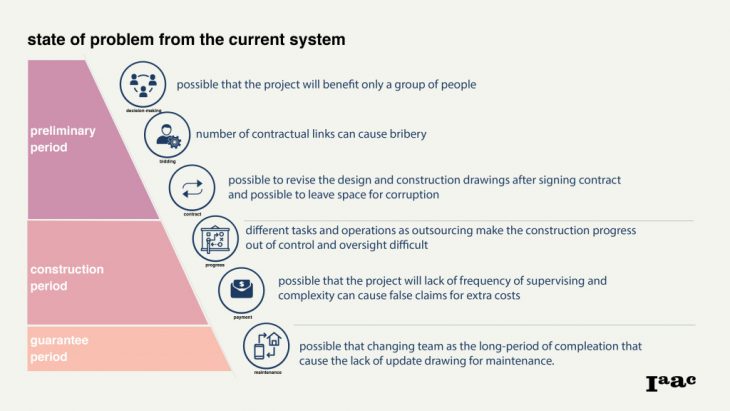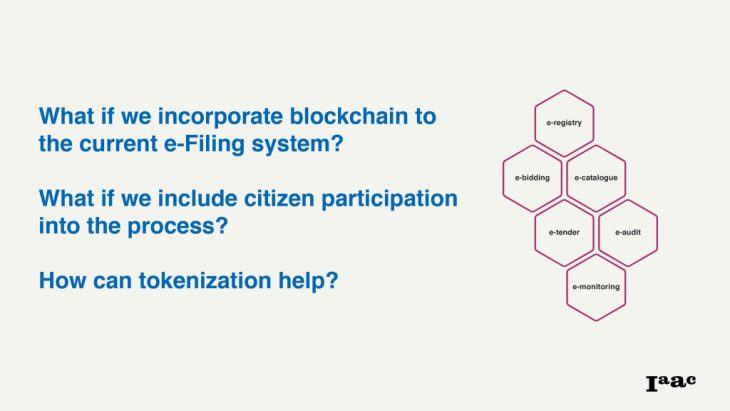 As we know, in most developing countries, public procurement is going through a digital transformation. For example, the most used in many countries are the e-catalogue and e-audit. But in most of the current online system, that process is still prone to corruption and allows modification from the internal in tender recording, even if it’s done through online.
As we know, in most developing countries, public procurement is going through a digital transformation. For example, the most used in many countries are the e-catalogue and e-audit. But in most of the current online system, that process is still prone to corruption and allows modification from the internal in tender recording, even if it’s done through online.
To understand better, Government procurement or public procurement is undertaken by the public authorities of the European Union (EU) and its member states in order to award contracts for public works and for the purchase of goods and services in accordance with the principles underlying the Treaties of the European Union. Public procurement represents 13.5% of EU GDP as of 2007, and has been the subject of increasing European regulation since the 1970s because of its importance to the European single market.
And so, the projects’ interest is looking at the possibilities of including blockchain into the matrix; what if we can incorporate blockchain to the current e-Filing system? And what if we include citizen participation in the equation? And how can tokenization help in the process help?
We think that by using blockchain, this technology could allow businesses to provide information one time only, creating a digital credentials that the city council can reuse. And as for the private sector, the aim of adding blockchain is to make it simpler to monitor and verify
The current public procurement in the majority of European countries are through an online platform called TED (tenders electronic daily), which displays the ongoing calls or available projects in Europe. TED (Tenders Electronic Daily) is the official source of information about opportunities for public procurement in the European Union, European Economic Area and beyond.
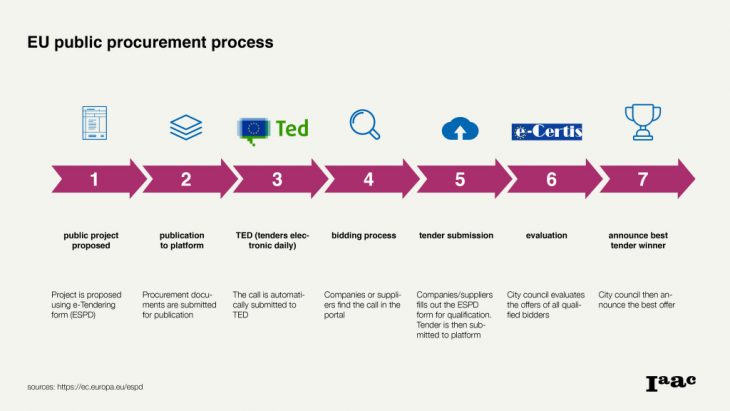
However with the current system, some reports say fraudulent companies still exist and is still prone to corruption
The blockchain is a digital, decentralized database that keeps a record of all the information exchanges that take place through a peer-to-peer (P2P) network . Every time a new exchange is required, an algorithm analyzes the data contained on the information that was generated in the past and evaluates its viability and security, and then adds a new block to the chain permanently and unalterable.
The new blockchain system aims to enhance the transparency and trustworthiness of assessing responses to public tenders. Because data stored on a blockchain cannot be easily falsified, it should ensure greater fairness in public service bidding procedures.
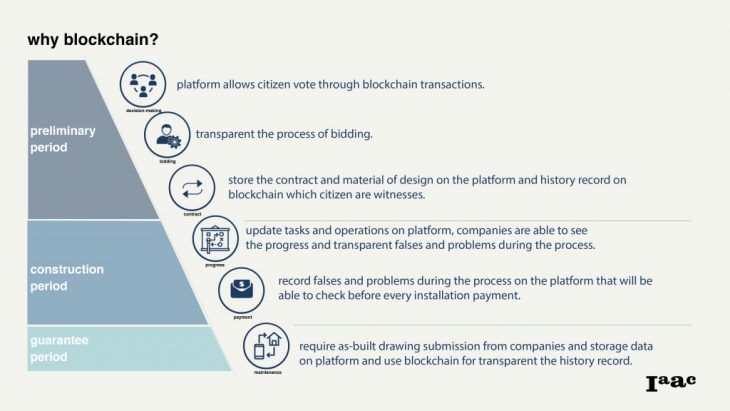 The proposed approach had three prongs to prevent corruption. Firstly once a tender is published it can’t be altered. Otherwise, someone could change the criteria to match one of the bidders. Secondly, bidding must be confidential, so other applicants don’t know the amounts or details. And the bids must be tamperproof. That prevents both the bidder altering details but also a corrupt government official changing proposals to make them less attractive compared to their preferred bidder. Finally, the organization that publishes the tender can only evaluate bids after the tender process is closed. All three are achievable using blockchain.
The proposed approach had three prongs to prevent corruption. Firstly once a tender is published it can’t be altered. Otherwise, someone could change the criteria to match one of the bidders. Secondly, bidding must be confidential, so other applicants don’t know the amounts or details. And the bids must be tamperproof. That prevents both the bidder altering details but also a corrupt government official changing proposals to make them less attractive compared to their preferred bidder. Finally, the organization that publishes the tender can only evaluate bids after the tender process is closed. All three are achievable using blockchain.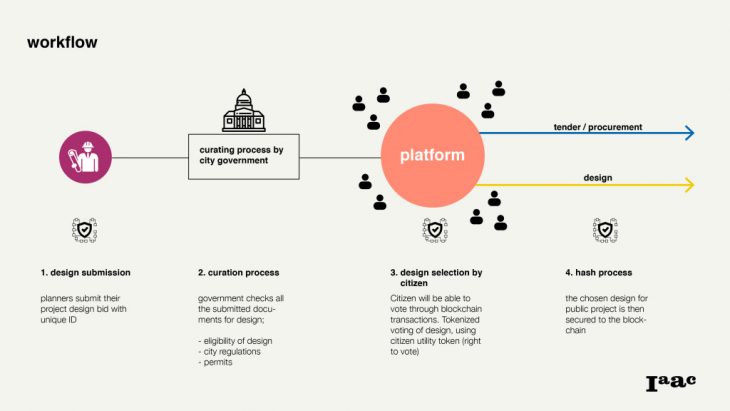
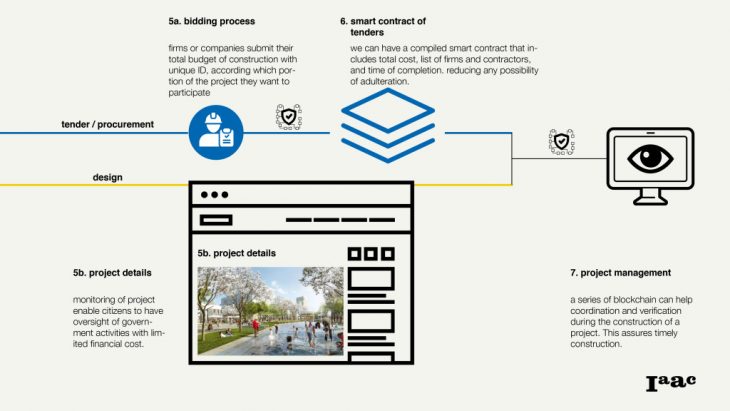
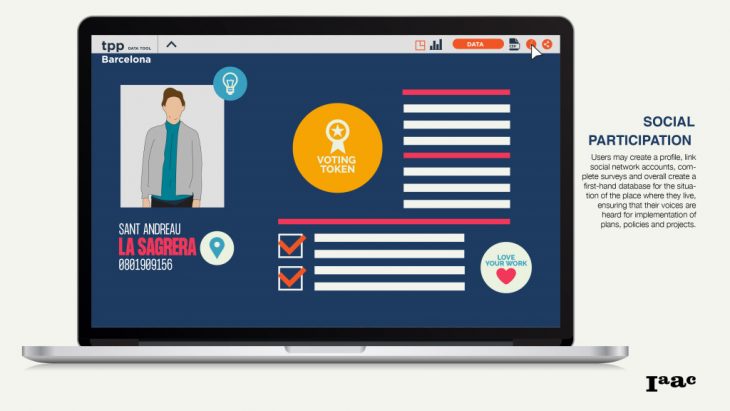
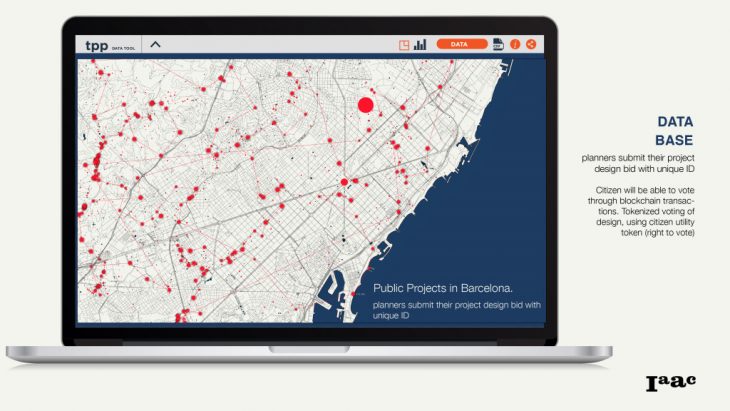
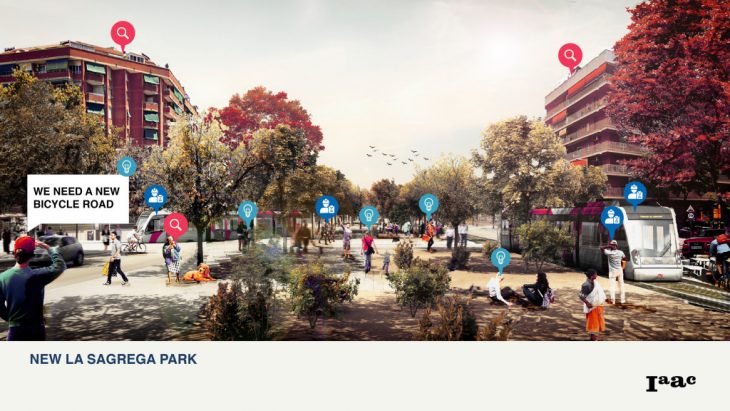
Credits
Tokenizing Public Procurement is a project of IaaC, Institute for Advanced Architecture of Catalonia
developed at Master in City & Technology in (2019/2020) by:
Students: Aryo Dhaneswara, Byron Cadena Campos & Pawitra Bureerak
Faculties: Jose Muñoz
